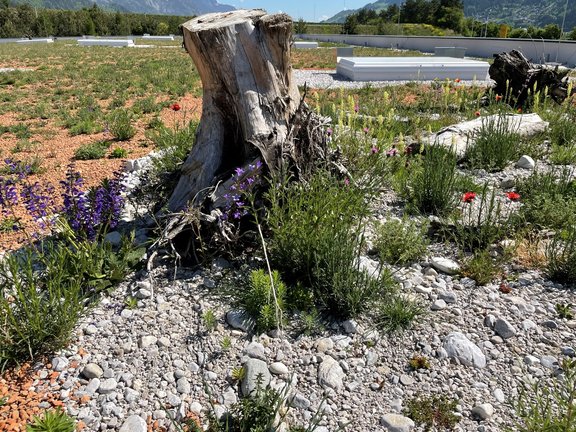
Photo: Newly created habitat on a flat roof in Tyrol.
In cities, largely unused roof surfaces account for 30-50% of sealed surfaces, which is why green roofs and facades are increasingly being promoted as an important contribution to sustainable building. The structural advantages of green roofs, such as rainwater retention or insulation against heat and cold, are now well documented. However, the extent to which green buildings contribute to the promotion of biodiversity has so far been insufficiently studied. The effects of extreme climatic conditions on the green roof (such as heat or drought) on the vegetation have also hardly been analyzed.
In the project "Green Roof Habitats" we investigate together with the participating schools BRG in der Au (Innsbruck), BRG Schoren (Dornbirn) and the Mittel-/Realschule Kleinwalsertal (Mittelberg)
1) what contribution green roofs can make to improving biodiversity,
2) whether green roofs in the Alpine region can survive in the long term in view of climate change and the associated extreme weather events, and
3) which modern methods for surveying insect diversity are particularly useful in the context of Citizen Science.
The project is led by Johannes Rüdisser (Department of Ecology), Andrea Ganthalerand Stefan Mayr(Department of Botany) and is carried out in collaboration with the Tyrolean State Museum and several associated partners from economy and society. Green Roof Habitats is funded by the Austrian Federal Ministry of Education, Science and Research.
Weiterführende Informationen:
